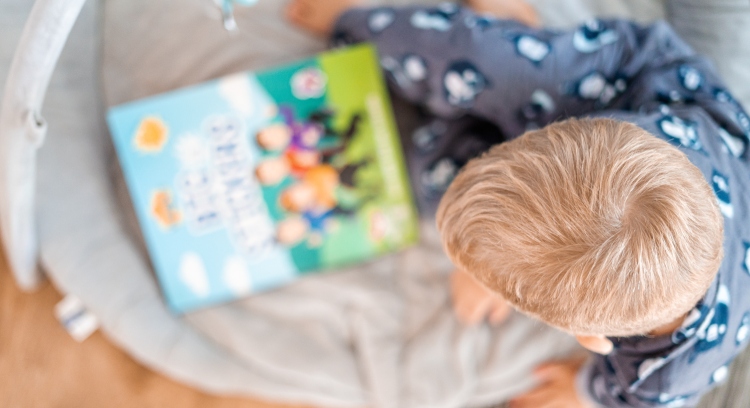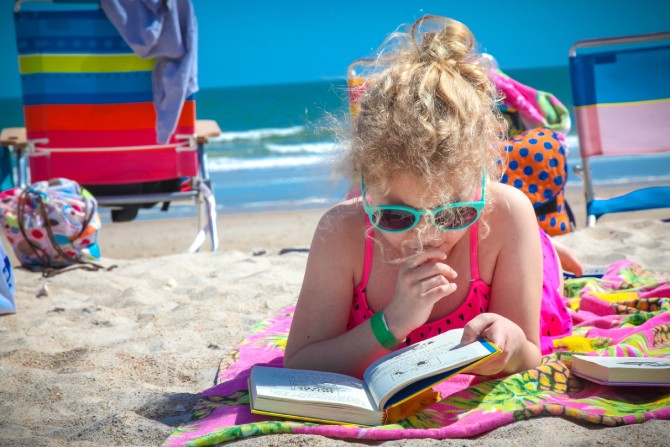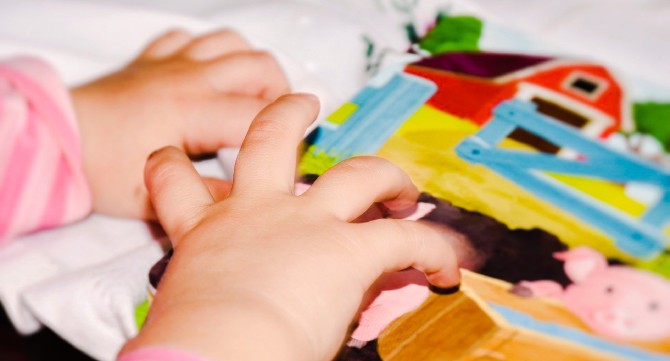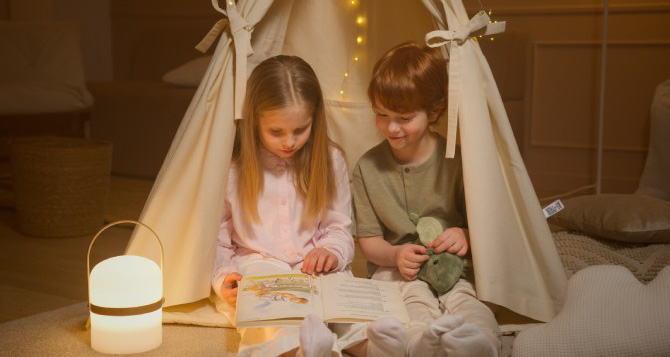How to Write a Children’s Book: The Dos and Don’ts and Everything in Between
You’d think that writing a book for children would be easy—after all, we were all children ourselves once, right? But the trouble with adults is that we often forget what it’s like to be a child.
J. M. Barrie, author of the famous children’s novel Peter and Wendy, demonstrates the difference between children and adults: children believe, and adults learn to doubt. In order to write a book for children, a writer must try to remember what it’s like to believe. That’s the first step. Afterward, we’re here to help!
In this article, we offer insight into the different types of children’s books, tips on how to approach writing for children, a detailed step-by-step guide on how to turn your idea into a published work, and a list of mistakes to avoid during that process.
So you want to know how to write a children’s book and where to publish it? Let’s get to it!

How to Write a Children’s Book: A Step-by-Step Guide
Writing children’s books is a process–not necessarily a hard one, but it can take some time and effort if you are looking to come up with a masterpiece. Luckily, we have broken down this process for you into actionable steps so you get to know everything involved.
Step 1: Choose Your Target Age Group
As a children’s author, you are addressing young readers whose interests vary greatly depending on what age group they’re in. A six-year-old and a sixteen-year-old would definitely not pick up the same book. In fact, everything about your book will depend on who your target reader is: the content, structure, format, design—even the type of paper you will be using!
Children’s literature is categorized into six main types, each catering to a specific age group:
| Book Type | Age Group | Description | Length | Examples |
| Board Books | 0-3 years | Simple, durable books with basic educational content. | Max 20 pages, 300 words | Counting on the Earth Forever My Baby |
| Picture Books | 3-6 years | Heavily illustrated books with simple storylines. | 8 to 48 pages, max 900 words | Pete the Cat and His Four Groovy Buttons Stella |
| Early Readers | 6-8 years | Books for beginner readers, often in series with simple sentences and relevant topics. | 1,000 to 3,000 words | A Pig, a Fox, and Stinky Socks The Bravest Dog Ever |
| Chapter Books | 8-10 years | Introduce independent readers to more complex plots and traditional chapter divisions. | 4,000 to 12,000 words | Zoey and Sassafras Fantastic Mr. Fox |
| Middle-Grade Novels | 9-12 years | More complex themes, subplots, and longer chapters with minimal illustrations. | 20,000 to 40,000 words | Wonder The Mysterious Benedict Society |
| Young Adult (YA) | 12-18 years | Focus on teen-centric themes like coming of age, sexuality, and bullying from a teen perspective. | 40,000 to 120,000 words | Looking for Alaska The Perks of Being a Wallflower |
Step 2: Find Your (Fun) Idea
With your target age group in mind, think about whether or not your idea is attractive enough for them. The ideas for writing a children’s book are limitless, but of course, the more unique and engaging it is for the kids, the higher your chances are for standing out. It is important to note, however, that even if your idea has been explored many times before in other books, a fresh way of communicating it on the page will certainly make all the difference.
Here are some questions you can ask yourself that can help you determine your children’s book idea:
- What makes this idea fun and exciting for kids? Focus on elements like adventure, humor, or magic.
- Is the concept relatable to my target age group? Will kids connect with the characters, themes, or situations?
- How can I put a unique spin on a familiar idea? Can I tell this story from a new perspective, add a surprising twist, or use inventive language?
- Does the idea inspire visual imagery? Think about how illustrations will complement and enhance the story.
- What lesson or value does the story convey? Ensure there’s something meaningful or memorable beneath the fun.

Step 3: Do Your Research—and Read!
Now that you know your target readers and have a golden idea locked down, it’s time to do some detective work. What other books in your category and genre are out there? How do they market themselves to children and parents? How would your book stand out from the crowd?
By asking such questions, you’re conducting your own market research, thereby giving your book a higher chance of succeeding. When you’ve explored what’s out there, start reading! The more books you read in your category, the more confident you’ll be in the way you structure yours and deliver the right content.
Pro Tip: If you want to know the trending children’s books, you can do some market research and look at what parents are searching to buy for their kids. For example, you can take a look at the Amazon bestsellers list and find out why they’re so popular. Consider aspects like the themes, writing style, and illustrations.
Step 4: Create Your Main Character
When writing a story for children, one of the most important things to consider is who your main character is. You want to create a character that’s relatable but that’s also different enough from your readers to get them excited. Additionally, your character should grow or gain some wisdom by the story’s end.
Here are some questions to consider that will help bring your character to life:
- What is a unique physical feature they have?
- What are their strengths and weaknesses?
- What are five things they hate?
- What’s their favorite hobby?
- Why have you chosen them to lead your story?
- What is their biggest fear?
- What’s their most embarrassing moment?
- How do they handle challenges?
- What motivates them to act?
- How do they change by the end of the story?
Step 5: Choose Your Conflict
Every plot, no matter how simple, requires some sort of conflict. It’s what drives the story forward and what moves your characters. In fact, experienced children’s book authors recommend starting your story with a dilemma and offering a resolution by the end.
Choosing a conflict for your children’s book depends on the kind of book you’re writing and who you’re writing it for. For instance, the conflict in a picture book marketed for five-year-olds could be a cat getting stuck in a tree, whereas a conflict in a young adult novel could be a girl who constantly gets bullied at school.
Step 6: Dive Right into the Story
With most children’s books, especially those for the younger age groups, you don’t have a lot of space to work with. Texts tend to be concise, and chapters are brief. That’s why in a good children’s book, there is a sense of momentum: the story flows and readers are carried right into the main events.
This means you don’t have much time to provide a whole bunch of background information or too much descriptive text. You want to keep your readers interested, and you want to make sure that you’ll hold their attention from start to finish. So if you’re writing a picture book about a boy who loses (and hopefully then finds!) his dog, make sure he loses it from the very beginning.
You also want to keep the events of the story moving quickly; a quick-moving plot holds the attention of young readers. One effective strategy to do this is using short, concise sentences to create a sense of urgency.

Step 7: Don’t Drag Out the Ending
The ending of a story usually happens after the resolution of the story’s conflict. Endings, especially in children’s books, normally shouldn’t be more than a couple of pages long. Why? Because your reader has already experienced all the excitement your book has to offer.
Imagine a story about a girl, May, and her cat. Here’s its basic plot structure:
- Introduction: May loves her cat, Mr. Whiskerton, but he is very naughty.
- Conflict: May loses Mr. Whiskerton, only to quickly find him stuck in a tree.
- Climax: Mr. Whiskerton is clinging to a tree branch that’s about to crack!
- Falling Action: May calls the fire brigade and they arrive to rescue Mr. Whiskerton.
- Resolution: May takes Mr. Whiskerton home. He has learned his lesson.
What a rollercoaster of events! But notice that after the fire brigade arrives and saves Mr. Whiskerton, there’s nothing more to hold your young reader’s attention. All that’s left to do is tie up the story neatly; for example, by dedicating a page to show May cuddling with her cat, happy and safe at last.
Step 8: Write a Draft, and then Rewrite it
Sometimes the scariest part about writing a book is that blank page that’s staring at you. But time and again, authors have described the perfect antidote for the problem: just start. It won’t be perfect the first time, but at least you’ll have something to work with.
So use the previous steps to build your confidence in the work you’re about to write and just put pen to paper (or fingers to keyboard!). Once you have a complete first draft, then you can start your self-editing. Trim the unnecessary details; change any vocabulary that might be either too advanced or too patronizing; adjust the tone of voice to suit your subject and target reader. Keep editing and editing until you’re satisfied.
Step 9: Choose Your Title
The title is your book’s ultimate marketing tool and the way your book will make a first impression not just on readers but on publishers as well. Imagine you’re pitching your work to an agent or publisher: “I’m writing a book about dragons who attend dance school,” you might say. Immediately, the response will be: “What’s it called?”
Titles are vital for children’s books because, along with the cover, they are your book’s first impression. Not only do they dictate what the cover will look like, but also if they’re catchy, weird, or even downright silly, they’ll be a hit with kids!
For example, you can use alliteration (The Wind in the Willows; Horrible Histories), rhyme (The Cat in the Hat; It’s Time to Wake, Jake!), exaggeration (Alexander and the Terrible, Horrible, No Good, Very Bad Day)—or any other creative techniques you can think of. You can also think of the main theme of your book, just like Eric Carle did with his famous book, The Very Hungry Caterpillar. Lastly, you can use the name of the main character in your title (Curious George).
So, if titles are that important, why leave it to the end? Well, the truth is, often you won’t have the perfect title until you’ve actually written the story. You might have an initial title and then realize it just doesn’t work now that you’ve actually arrived at the end of your book. So get the writing done first, and the right title will follow.

Step 10: Hire Some Professionals
So you’ve written and self-edited your book. Take a moment to congratulate yourself—you’re nearly there! Hiring a professional editor is the natural next step, especially if you’re new to writing children’s books.
But you’re not just looking for any editor; you need a professional children’s editor who specializes in books for your target age group and genre. If you’re not sure where to find one, the Editorial Freelancers Association is a great place to get started.
You might also like to send your story to some beta readers. And since yours is a children’s book, you want to be specific about the type of readers you seek out. Of course, feedback from other children’s authors is great; however, the truly valuable input will come from parents and their children. After all, they are your book’s market, so who better to let you know what works and what doesn’t?
Once the editing part is done, you should start looking for an illustrator whose style goes well with your story. Consider the ones who can best capture the mood and world of your story and can create drawings that resonate with your target age group. While young readers might be drawn to bright, bold illustrations, an older audience would probably appreciate whimsical characters and a less vibrant color palette.
Where to Publish Your Children’s Book
There are many ways you can get your book published: self-publishing, hybrid publishing, or traditional publishing. If you decided, however, that you prefer to self-publish your book and gain full control over the creative process, then you should consider Kotobee Books. This platform allows you to publish for free and get 100% royalties for each book sale!

You can also learn how to use Kotobee Author to create some outstanding interactive books for children. As for those who are interested in getting published through a publishing house, here is a list of some of the wonderful children’s book publishing houses and presses we love.
| Publisher | Children Categories | Examples of Bestsellers | Submissions |
| Random House Children’s Books | Babies and toddlers, early readers, intermediate readers, young adults | Hattie Harmony, Goodnight Racism | Manuscripts can only be submitted through literary agents. |
| Little, Brown Books for Young Readers | Picture books, middle-grade, young adult, graphic novels | Think Big, Little One, The Wild Robot | Manuscripts can only be submitted through literary agents. |
| HarperCollins Children’s Books | Board books, picture books, early readers, middle-grade, teen/young adults | Stacey’s Extraordinary Words, Who Are Your People? | Manuscripts must be submitted through a literary agent, except when submitting to the children’s native-focused imprint Heartdrum. |
| Macmillan Children’s Book Publishing Group | Baby and toddler, young readers, children’s classics, poetry, young adult | The Gruffalo, Children of Blood and Bone | Manuscripts must be submitted through literary agents. |
| Flying Eye Books | Picture books, and children’s books for up to 14 years (fiction and nonfiction) | Professor Astro Cat’s Frontiers of Space, I Ate Sunshine for Breakfast | Author submissions accepted for picture books and illustrated non-fiction books. |
| Thames and Hudson | Activity books, picture books, pop-up books, non-fiction children’s books | Out to Sea, If I Had a Dinosaur | Authors can send their proposals. |
| Laurence King Publishing | Picture books, activity books, non-fiction books for young adults | Little Guides to Great Lives: Anne Frank, A Book of Monkeys (and Other Primates) | Authors can submit their work directly through email. |
| Firefly Press | Younger readers, middle-grade, young adults | Crater Lake, Lori and Max | Author and illustrator submissions are accepted (occasionally for fiction). |
Final Thoughts
It’s clear that writing a children’s book is A LOT of work. But oh sweet the joy of touching the lives of young readers! And now that you know the steps to follow, what’s to stop you from writing the next bestseller?
Just remember to always keep your target age group in mind, and to leave the adult doubts at the door. After all, children’s writing is where the magic of childhood comes alive, and understanding how to write a kids’ book is all about embracing that wonder.
.
Read More
Creating Outstanding Interactive Children’s Books: Best Practices, Tools, and Examples
Augmented Reality in Books and Publications
How to Create an Interactive Textbook for Your Students
















JoAnn
November 16, 2023Your emphasis on understanding your audience, crafting relatable characters, and maintaining a sense of wonder and simplicity is foundational advice. It’s evident that you’re not just sharing tips but also imparting a philosophy of storytelling that is rooted in a deep understanding of the world of young readers.
Kotobee
December 27, 2023Hi JoAnn!
Thank you so much for your thoughtful comment and kind words! We are glad you found the advice presented in this article useful. 🙂
Norma
June 5, 2024You have a true gift for sparking the imagination of young readers!
Kotobee
June 10, 2024Thanks a lot Norma for your kind words! 🙂
Joanne
August 20, 2025Such a helpful guide! Breaking it down by age, from board books to YA, and walking through everything from nailing that fun idea to picking the perfect title and illustrations makes writing for kids feel way more doable. Love it!